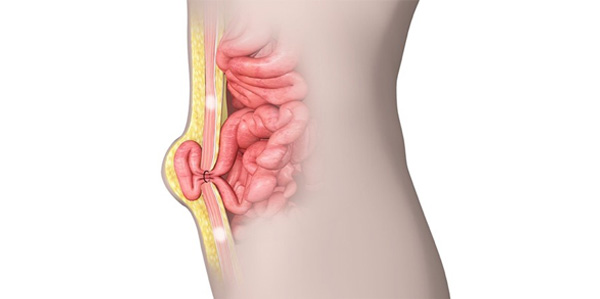Umbilical Hernia Repair

Umbilical or Belly button hernia is a condition in which contents of the abdominal cavity protrude as a bulge through the navel. Factors responsible for umbilical hernias in adults include pregnancy, obesity, connective tissue disorders, or general wear and tear associated with strenuous activities.
In addition to an umbilical hernia, there may be hernias immediately above or below the umbilicus, referred to as supra-umbilical and infra-umbilical hernias. Collectively, these are termed peri-umbilical ventral hernias.
Umbilical hernias are cosmetically unappealing. They may impair quality of life by causing pain and discomfort. Rarely they may result in serious complications such as bowel obstruction or strangulation.

Although in newborns umbilical hernias often resolve spontaneously, in adults they do tend to grow in size if not repaired surgically. An umbilical hernia may be repaired with sutures alone, or with a prosthetic mesh. Repair with a prosthetic mesh is referred to as 'tension-free' mesh repair. Use of mesh reduces tension on native tissue and decreases incidence of recurrence of hernia. Whereas suture repair is associated with a recurrence rate of 10%, tension-free repair with mesh is associated with a reduced recurrence rate of 1-2%. Suture repair is indicated for small hernias, whereas repair with mesh is indicated when hernia size exceeds 2 cm, or when the surrounding native tissue is weak. Umbilical hernia repair is extremely safe and is performed at ambulatory surgery centers. It takes less than 30 minutes to complete. Patients can expect to return to daily activities and work within a few days. They may resume strenuous activities and lifting of objects heavier than 25 lbs within 4-6 weeks.

